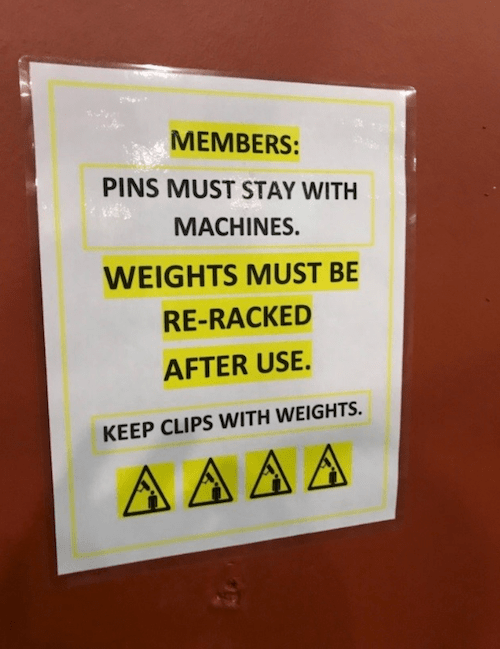Lirio, The Behavior Change Company, delivers results by drawing insights from hundreds of behavioral biases and theories. Our Bias Brief series walks through specific biases one by one, each thoughtfully selected from our long list of insights. Read on for a brief rundown on the chosen bias, complete with examples and instructions for putting it into action to help your audience do better.
Bias #8: Ingroup/Outgroup Bias, 8-minute read
Defined:
Ingroup/Outgroup Bias: A pattern of favoring members of one’s own “ingroup” (a social group with which one identifies) over “outgroup” members (a social group with which one does not identify).
Described:
In 1968, the day after Martin Luther King Jr. was assassinated, a third-grade teacher named Jane Elliott in Riceville, Iowa taught her students a lesson the whole world would remember. She divided her class by the color of their eyes, separating the blue-eyed children from the brown-eyed children. Then, she informed everyone that blue-eyed children were superior. They were smarter, cleaner, and more capable, she said—better in every way. Their “superiority” entitled blue-eyed children to special privileges, including a second helping at lunch and five more minutes at recess.
The brown-eyed kids weren’t so lucky. Mrs. Elliott informed the class that brown-eyed children were dirty, dumb, and were not allowed the same privileges afforded to the blue-eyed children. Brown-eyed children were even made to wear collars, so others could more easily recognize them from a distance.
The effects were immediate and terrifying. Within minutes, blue-eyed children mercilessly ridiculed their brown-eyed classmates—calling them stupid, shunning them on the playground, and treating them with contempt. Neighbors grew distant. Friends became enemies.
The next day, Mrs. Elliott threw them a curveball. She informed her class she had made a mistake. It was the brown-eyed children who were superior. Emboldened by their newfound superiority, brown-eyed children began subjecting their blue-eyed classmates to the same abuse they themselves had endured the day before. 1
Us & Them
Mrs. Elliott’s students were exhibiting ingroup/outgroup bias (also called “ingroup favoritism”)—the tendency to favor members of one’s own group (“us”) over those in other groups (“them”).
“We should expect ingroup bias to occur,” wrote behavioral researcher Henri Tajfel, “whenever the social world of an individual is clearly dichotomized into ‘us’ and ‘them.’” 2
Interestingly, Tajfel also found that people with the same ”objective” differences do not exhibit discriminatory intergroup behavior if they don’t have a clear-cut classification superimposed on them. The students’ eyes, for example, had always been blue or brown. It wasn’t until their teacher drew their attention to eye color, and its supposed influence, that it mattered.
According to Dr. Robert Cialdini, a social psychologist at the University of Arizona, not only do we assign elevated importance to factors that have our attention, but we also assign them causality:
“Because we typically allot special attention to the true causes around us, if we see ourselves giving such attention to some factor, we become more likely to think of it as a cause.” 3
Because students were focused on each other’s eye color, they assumed eye color was responsible for an individual’s negative attributes.
I Belong, Therefore I Am
Social identity theory posits that ingroup bias comes from our need to improve self-esteem. Since we draw a measure of our self-identity from our social groups, we transfer the desire to see ourselves positively onto those groups. Consequently, we tend to view our own groups in a positive light while viewing other groups negatively.
I Belong, Therefore I Behave
Social groups have unwritten rules about how their members should behave. These are called “group norms” and represent the accepted standards of behavior for members of the group. Since people derive a portion of their self-identity from their membership in social groups, group norms exert significant influence over member behavior, creating a strong desire to conform. 4
Ingroup/Outgroup Bias Can Help or Hurt Us
Ingroup/outgroup bias can contribute to positive behavior change when leveraged appropriately, but it can also interfere with those efforts if ignored or misunderstood.
I worked for a company called Healthways that wanted its employees to participate in a wellness program called BeWell. Participants would complete an online assessment and an annual health screening. For several years, the company promoted BeWell as a way to “improve well-being” and enjoyed modest results. Asking employees to join a well-being improvement program, it turns out, causes them to ask themselves, “Does my well-being need improving?”
Since employees felt—rightly or wrongly—that they were in relatively good health, most answered “No.” To improve participation, we needed them to ask a different question, one for which their answer would be “Yes.” Ingroup/outgroup bias provided the solution.
First, we changed the name of the program from BeWell to BeHealthways. The new name emphasized belonging instead of improved well-being. Next, we changed promotional messaging to reinforce people’s membership in a group defined by employment at Healthways (this is who we are). Once people felt a strong association with the group, we began introducing group norms (this is what we do).
Healthways employees call each other “colleagues.”
Healthways colleagues contribute to their 401k.
And, eventually:
Healthways colleagues take the Well-being Assessment and get an annual health screening.
By appealing to people’s identity as Healthways employees, rather than their desire for improved well-being, the new approach doubled participation in its first month!
On the other hand, ignorance of ingroup/outgroup bias can lead to behavior change attempts that backfire. I noticed the sign below at my gym the other morning. The sign’s creator hopes to persuade gym members to keep pins with machines and re-rack weights, but their approach may have the opposite effect.

By addressing “MEMBERS,” the sign creates the perception of two groups: members (the sign’s target) and management (the sign’s author). For members, this promotes allegiance to other members (ingroup) and competition or antagonism toward management (the outgroup). This feeling is reinforced by the icons at the bottom of the sign showing security cameras surveilling members.
This sign makes keeping pins with machines and re-racking weights an angry directive from an outgroup—one so distant it must watch members with cameras—something members are likely to resist. (Shoot, I always re-rack my weights, but upon reading this sign, I felt like leaving them piled on the floor.)
Management could have created the perception of a single ingroup and positioned the desired actions as normative behavior for the group by saying something like:
“Happy New Year and a special welcome to people joining us for the first time. As part of the Franklin Athletic Club family, we all look out for each other by keeping pins with the machines and re-racking our weights. Welcome to the family and enjoy your workout.”
The Takeaway:
By directing people’s attention and associations, you have the power to influence their perception of the social groups to which they belong and either encourage cooperation or amplify antagonism as a result.
I’m sure you’ll do the right thing. You seem like one of us, and people like us use our powers for good.
To learn more about how to leverage ingroup/outgroup bias for positive health outcomes, read this blog post.
About the Author:
This Bias Brief was written by Greg Stielstra, the Senior Director of Behavioral Science at Lirio. Greg is a behavior change expert and published author with over 25 years of experience in marketing and engagement.
References:
- Watch the PBS documentary: https://www.pbs.org/video/frontline-class-divided/
- Tajfel, Henri, et al. “Social Categorization and Intergroup Behaviour.” European Journal of Social Psychology, vol. 1, no. 2, 1971, pp. 149–178., doi:10.1002/ejsp.2420010202.
- Cialdini, Robert, 2018, Pre-Suasion, 89-90.
- McLeod, S. A. (2008). Social roles. Retrieved from https://www.simplypsychology.org/social-roles.html
Other Readers Viewed:
Loss Aversion – Lirio Bias Brief
Social Proof – Lirio Bias Brief
Impostor Syndrome – Lirio Bias Brief

